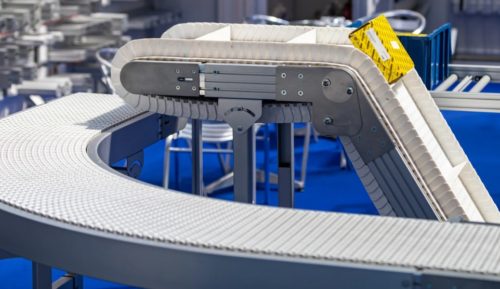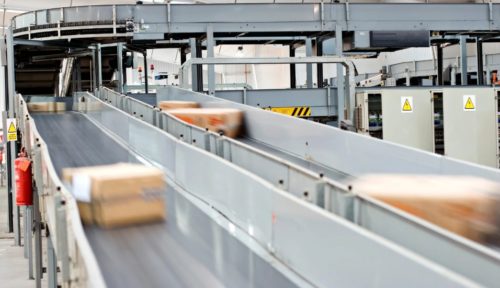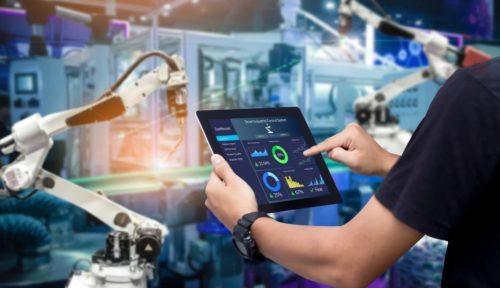The rapid advancements in automation technology have transformed industries, pushing the boundaries of what’s possible in manufacturing.
One key innovation that’s reshaping assembly lines, inspection stations, and packaging processes is the flexible feeder system.
Flexible feeders, designed to manage and orient component parts for automated tasks, are becoming essential in industries such as electronics, automotive, pharmaceuticals, and consumer goods. But what makes them so important? Let’s dive in.
How Flexible Feeders Work?

Flexible feeders are designed to work with a variety of parts, handling different shapes and sizes with ease.
The first step involves loading parts onto a surface, often a vibration platform. Parts are dispensed randomly, but thanks to the vibrating platform, they are separated and distributed into an organised formation, ready for the next step.
Next, an industrial camera, combined with artificial intelligence (AI) and image-processing software, plays a crucial role in detecting the position and orientation of each part on the platform. This vision system ensures that each part is accurately identified for the next stage of processing.
After identification, the system communicates with a robotic arm or pick-and-place mechanism, which is guided to pick up the parts.
The robotic arm, often equipped with a suction or mechanical gripper, moves the parts to their next destination—whether it’s for assembly, inspection, or packaging.
Lastly, the entire process is governed by intelligent software that integrates the vision system, motion control, and part-handling rules.
This software allows dynamic adjustments to the vibrations, sorting mechanisms, and robotic movements, ensuring optimal performance and flexibility for different production needs.
Manufacturing Efficiency with Flexible Feeders – Key Advantages

Why are flexible feeders becoming a go-to solution for so many manufacturers? Here’s why:
1. Versatile
Flexible feeders are designed to handle a wide variety of parts, ranging from small electronic components to large mechanical pieces.
This adaptability eliminates the need for multiple dedicated feeders, thus saving both cost and space in the production environment.
2. Efficient
Unlike traditional systems that require hours of retooling when switching between parts, flexible feeders can switch between different part types in just minutes.
This dramatically reduces downtime, allowing manufacturers to boost production efficiency, especially in environments with frequent product changes.
3. Precise
The combination of advanced vision systems and robotic arms ensures that parts are picked and placed with high precision.
This reduces errors, improving overall product quality and decreasing the chances of defects in the final product.
4. Cost-Effective
For industries that produce multiple product types in smaller batches, flexible feeders are a cost-effective solution.
Rather than investing in dedicated feeding systems for each product, a flexible feeder can serve as a single, adaptable solution for a wide range of parts, reducing equipment and maintenance costs.
Applications in Manufacturing

Flexible feeders are transforming various sectors of manufacturing. Here’s how they’re being applied across different industries:
- Assembly Lines: Flexible feeders are used to supply parts to robots for various assembly tasks.
- Packaging: Parts are sorted and oriented before being packaged, ensuring an efficient packaging process.
- Inspection: The feeders present parts to quality control stations, ensuring that components meet the necessary specifications.
- Consumer Goods: In the assembly of toys, home appliances, and other consumer products, flexible feeders play a key role in ensuring smooth production.
- Automotive Industry: From screws and clips to brackets, flexible feeders are used to sort and place automotive parts precisely.
- Electronics Manufacturing: Handling micro-components like screws, connectors, and chips is a breeze with flexible feeders, ensuring accuracy in sensitive production environments.
- Medical Device Production: Flexible feeders ensure the precise handling of small, delicate parts such as syringes, vials, and implants, essential for maintaining high-quality standards in the medical field.
Future Trends in Flexible Feeding
As technology continues to evolve, so does the potential of flexible feeders. With the incorporation of AI, flexible feeders will become even more adaptive, able to recognise patterns and adjust automatically to the needs of production.
Data-driven insights will allow manufacturers to optimise operations, predict maintenance needs, and increase system efficiency through cloud-based platforms.
The future of manufacturing lies in adaptable, cost-effective solutions like flexible feeders. Their versatility, precision, and ability to reduce downtime are transforming how industries approach production.
With advancements like AI integration and collaborative robotics, the possibilities for flexible feeders are only expanding.
Author Profile
- Blogger by Passion | Contributor to many Tech Blogs in the United Kingdom | Fascinated to Write Blogs in Business & Startup Niches |
Latest entries
 Tech Updates18th September 2025Advancing Audio-Visual Systems for Modern Work, Learning, and Public Spaces
Tech Updates18th September 2025Advancing Audio-Visual Systems for Modern Work, Learning, and Public Spaces Gaming29th May 2025Are Gaming Laptops Better Than Gaming PCs? A Comprehensive Comparison
Gaming29th May 2025Are Gaming Laptops Better Than Gaming PCs? A Comprehensive Comparison Tech Updates8th May 2025Are Smart Locks the Future?
Tech Updates8th May 2025Are Smart Locks the Future? Business6th March 2025Edward Thornton: A Notable Figure in the Investment World
Business6th March 2025Edward Thornton: A Notable Figure in the Investment World

